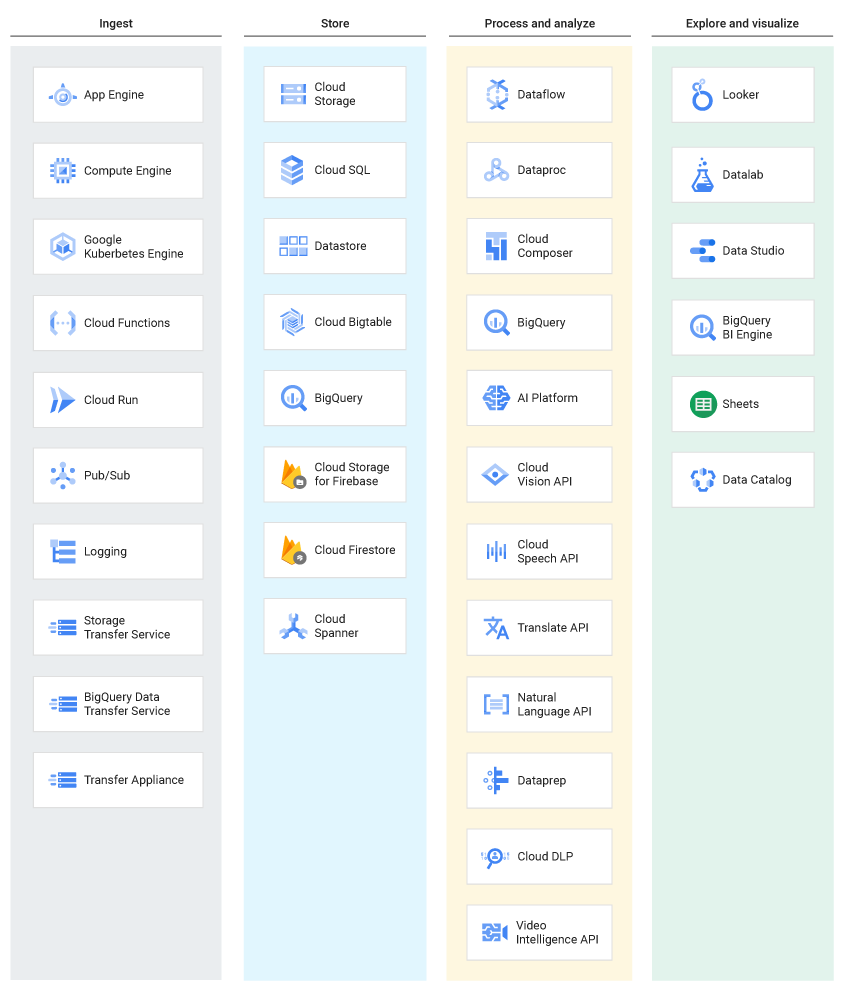For any business in the 21st century, having a reliable data ecosystem and infrastructure, preferably using the Google Data Stack, is critical for making correct business decisions.
There is currently an industry shift of business moving from proprietary do-it-all-in-one tools to a data stack composed of modular components, with each component responsible for different steps in the data lifecycle.
In this blog article, we explore what a typical data lifecycle looks like and what potential Google Data Stack products for smaller and medium-sized enterprises can look like, and how they interact with each other.
The Google Data Lifecycle
The Google data lifecycle consists 4 main steps:
- Ingest: This step involves capturing raw data from a source such as web and app analytics.
- Store: After the raw data has been pulled from a source, it typically needs to be stored in a location and format that is both durable and can be easily accessed.
- Process and Analyse: In this step, transformations are done on the stored data to transform them into actionable insights which can then be effectively used by a business.
- Explore and visualise: The final step is conducted in order to better understand the results of the processing and analysis we completed in the Process & Analyze step.
Advantages of the Google Cloud Platform
The advantage of Google Cloud Platform (GCP) is that there is a massive number of tools that can be integrated with each other and custom-fit to a business’s requirements.
The even better thing is that as the amount of data increases for a business, Google’s data infrastructure can scale as needed. I mean just look at the number of different tools GCP offers for each step of the data lifecycle.
The Google Data Stack Solution
For many smaller and medium-sized businesses starting out, building a complex infrastructure may not be the best solution.
For example, many businesses don’t need their infrastructure to handle billions of hits, and something smaller scale is enough. While these businesses don’t need a data behemoth built, data is still critical to making the correct business decisions.
Below we introduce a Google Data Stack infrastructure that can handle the data and business requirements for smaller and medium-sized enterprises that are at the start of their data journey, at a fraction of the cost of a full data stack.
Store
While we can keep data in just Google Analytics, it is often a good idea to export Google Analytics data to a data warehouse where more complex analysis can be conducted on the data at a raw, hit-level instead of being aggregated by session-level. And why not just use a Google product to do this?
BigQuery is Google’s cloud data warehouse product offering designed specifically for allowing users to run high-performance queries against large datasets using SQL.
While Google Analytics Export to BigQuery is only available to Google Analytics 360 clients, Analytics 4 offers free export to BigQuery with no billing charges. You just need to pay for storage and processing of queries if you exceed the free tier usage limits.
Therefore Internetrix recommends you get started with Google Analytics 4 today to take advantage of the built-in Export to BigQuery integration.
Process and Analyse
A good thing about exporting our Google Analytics data to BigQuery, is that BigQuery itself can be used to transform the raw Google Analytics data to usable and actionable data, without having to add any other tool.
Explore and Visualise
Once we have ingested, stored, and transformed our data, we are ready to create some powerful visualisations and insights. Google Looker Studio is a great entry-level dashboarding solution and is both easy to use and free.
What’s even better is that it seamlessly connects with a number of different data sources including Google Analytics, Google Analytics 360, Google Ads, BigQuery, and even spreadsheets that may contain data for your business.
Looking for more information? XPON is a dual-stack Google Marketing Platform and Google Cloud partner. Please get in touch with our team with any further questions.

